Icy Inverts Cruise 2013 - Shipboard Blog - Dec 10th to Dec 12th
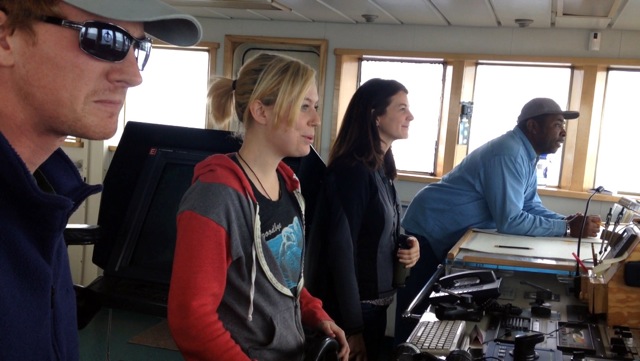
12 Dec 2013 - 65o 20’ S 65o 49’ W
A few days ago, I was given a privilege that would completely terrify anyone familiar with my driving skills: I was allowed to steer the ship (see above image). It was only for a few minutes, and I was given precise instruction on what to do (“30° to the right... okay, now go 10° to the left… just make sure you don’t hit that big iceberg.”), but I was responsible for the direction of our boat. Navigation is a team effort; while I was at the wheel, we were negotiating our way through a seemingly endless field of ice. It’s important to know which pieces you can easily push out of your way, and which must be avoided. Upon our initial arrival in Antarctic waters, one of the first things I noticed was the surprisingly bright blue hue of some of the icebergs (see below image). This beautiful color is due to many years of intense pressure that forces every single impurity out of the crystalline structure of the ice. No minerals, no oxygen, just pure water. Eventually, a portion of this ice may cleave off from its glacial source and float out into open water. Failure to steer clear of these huge hunks of blue ice results in a loud “ka-chunk!” and possibly a nice little dent on the hull of the ship.
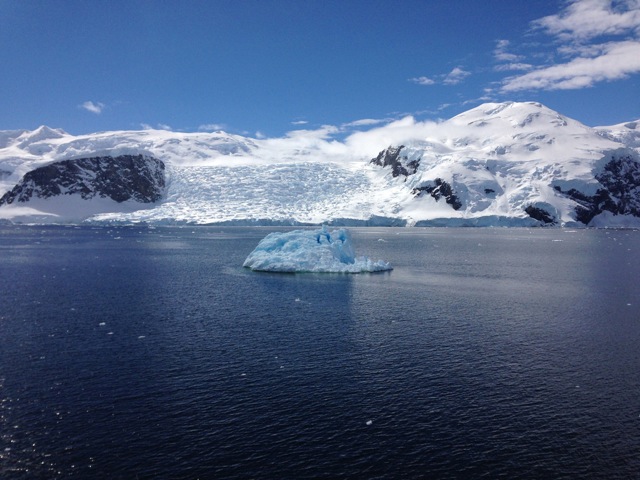
As I’m writing this post, we are again traversing waters riddled with pack ice, and I can hear some of the relatively thinner sheets of ice being caught and pushed aside by the ship. This ice tends to be younger than the larger, denser icebergs that have broken away from a glacier, or the huge tabular bergs with flat tops that were once part of an ice shelf attached to the coastline (see above image). Unlike icebergs or tabular bergs, pack ice forms in the sea rather than on land, and falls into a few different size-based categories, ranging from an ice cake (less than 10 meters across) all the way up to a vast ice floe (over 10 kilometers across). When moving through a field of ice punctuated by patches of open water, our speed decreases from about 10 knots (1 knot = 1 nautical mile per hour) to 3-4 knots, giving the captain and chief mate time to discern a safe path to our next intended sampling station. In the meantime, I’m perfectly content to gaze out my cabin window and watch the ice float by. And if I’m lucky, maybe spot a penguin or two.
Contributed by: Avril Harder, Graduate Researcher, Central Michigan University
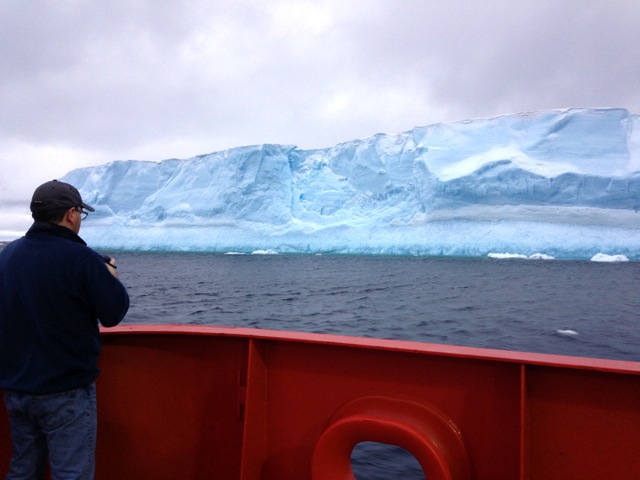
***************************************************************************************
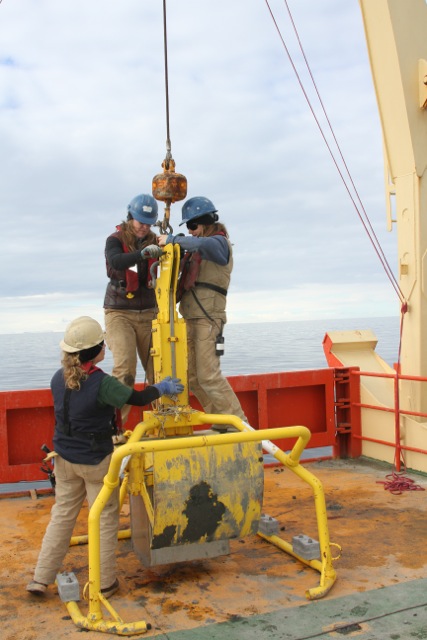
11 Dec 2013 - 65o 23.0`S 660 00.0`W
When on a research vessel, and especially in the Antarctic, communication with the outside world is limited. Many of us find this very appealing – one can focus on science – but it also means less time to talk to loved ones and it means I cannot do my holiday shopping on-line and will have to do it all on the 23rd and 24th of December. One of the small amenities we have is a daily news brief from the New York Times and the USA Today. In the NYT brief today, there was an editorial entitled “Missing from Science Class.” The article mentioned how poor the USA is performing in science and math. This fact is due, in part, to with science and math being undervalued in society as well as the overt attacks on science by the conservative or religious groups. The article also mentioned that in many science and math related jobs, women are wholly underrepresented and that role models are important….for anyone. Having two daughters, Jade and Coral, my wife, Jewell, and I have tried provide role models and have stressed the importance of math and science both in the home and in the classroom because we don’t want our daughters to be hindered by perceived gender barriers.
This said, I think I would be very surprised if either of my daughters came to me and said “Dad, I want to grow up to be an MT?” I would be supportive, but surprised nonetheless. So what is an MT? There are several “groups” of people that help get the science done on the R/V Gould. There is the Edison-Chouest Offshore (ECO) crew which are the people whom run the ship (Captain, Mates, Engineers, etc.) and a group that is a mix of ASC (Antarctic Support Contract) and Lockhead-Martin personnel which consists of the technicians whom help with communication, deck operations and so on. The first few times I came to the Antarctic both of these groups were all male, but that has changed. To help get our science completed, we rely on, among others, Marine Technicians (MTs). Being an MT is physically demanding work that involves deploying and retrieving equipment from overboard (see above image), general sea-going knowledge, dealing with winches, knot tying, and dealing with heavy metal items in rough seas. In contrast to my earliest trips on the R/V Gould in 2000 and 2001, all MTs on this trip are women. Serious girl power (see below image)!!
There are several different ways to get into this line of work. For example, many MTs have a background in commercial fishing vessels, but that tends to be mostly guys as well. Some of the MTs on this boat have dealt with tall ships (i.e. large sailing ships) and gained much of their experience there. However it has happened, a more gender balanced cruise brings a slightly different dynamic to the boat….and for the better. In comparison to the MTs, when I reflect on scientists who are oceanographers or whom work in Antarctic, it is still a male dominated field, but there are several very successful women whom are leading scientist in their respective fields. So whether MT or Oceanographer, these women serve as role models to the next generation.
So I thank the MTs on this cruise, Krista, Sandy, Mackenzie, and Melissa. Not only have they helped us do great science, but the next time I talk to an elementary of middle school class, you will unknowing serve a role models to a bunch of young ladies.
Contributed by: Dr. Ken Halanych, Professor, Auburn University
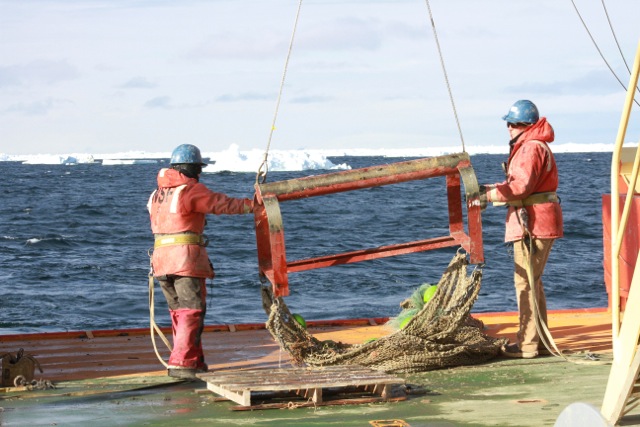
***************************************************************************************
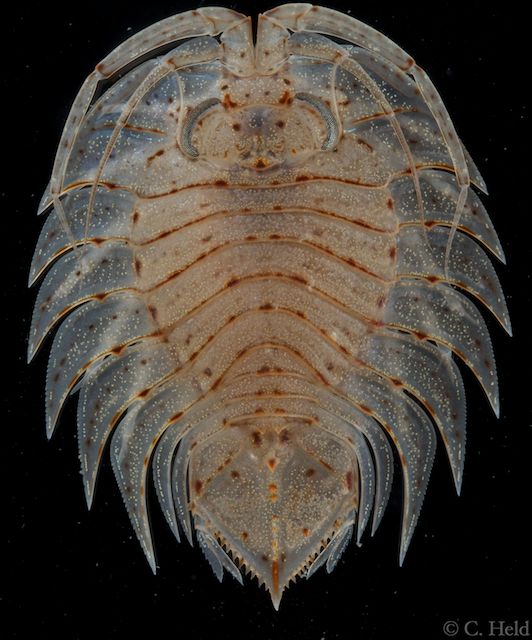
10 Dec 2013 - An old friend (65° 6.05` S 63° 9.19` W)
Although the Antarctic benthos bristles with unknown species you don’t return to any place often without seeing at least some old friends. At least this is how I felt when this magnificent crustacean turned up for the first time in our trawls (see above image). It grows quite large (8 cm) and its scientific name Ceratoserolis trilobitoides hints at its close resemblance to the extinct trilobites.
It was this species that originally got me thinking during my PhD about how well known the Antarctic benthos really was. At the time everyone told me that Ceratoserolis trilobitoides was a well-known species that occurred everywhere around Antarctica. It was actually the first species to be described from the Antarctic seafloor, 1833 by James Eights. Although sorting outside on deck for hours on end can be bitterly cold for us, this American naturalist sailed aboard small sailing ships with early sealers, launching small dredges that had to be pulled up by hand, wearing wool pullovers in an unheated environment. Quite a contrast to today’s capacious research vessels with central heating, a hot shower and high tech insulating clothing (and it is still cold out there). The allegedly well-known serolid struck me as looking subtly different and when analyzing its genetics it turned out that this species comprised several distinct species, which used to be interpreted as one. Although this idea met quite a bit of resistance more than a decade ago, it is now clear that cryptic species are much more common than previously thought in Antarctica. Whenever a species gets split up into several new ones, it is often hard to determine which species was originally described and thus rightfully bears the species name. The original material Eights collected has been lost as were his original of drawings. Fortunately, his description exceeded the quality of his contemporaries by far and even in the mediocre reproductions of his drawings one can make out the subtle details to be sure that we are indeed looking at Ceratoserolis trilobitoides and not one of the cryptic species. Well…… our findings extend the distribution of this species from the South Shetland Islands into the Western Weddell Sea so perhaps it is more accurate to say that it is none of the currently known cryptic species. Considering the outstanding qualities of this American whose work remains useful 180 years (!) after its publication, it is puzzling that we know so little about him.
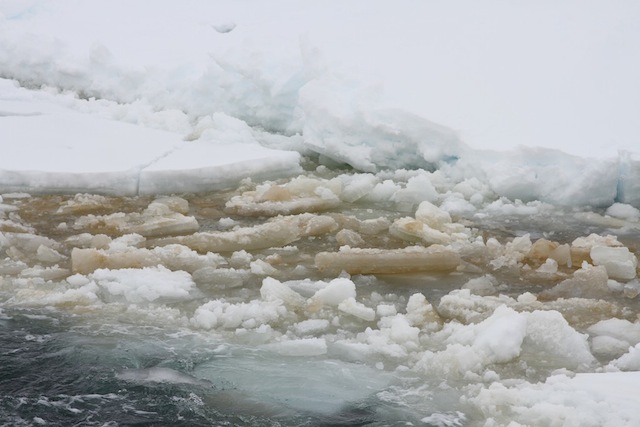
Adaptation
Every ecosystem ultimately depends on primary production. In the Antarctic, most of that is achieved by microscopically small unicellular organisms, which can be seen as a dark brown smear on the underside of the sea ice (see above image).
This food pulse is restricted to the short austral summer, however. The paucity of nutritious phytoplankton during the long and dark winter months in Antarctica may be one of the reasons we are finding so many species here that provide their offspring with food and shelter when they are young rather than leave it to them to find enough food in the plankton. And sometimes we can add more species to this list of brooding species, such as this rare brittle star (see below image).
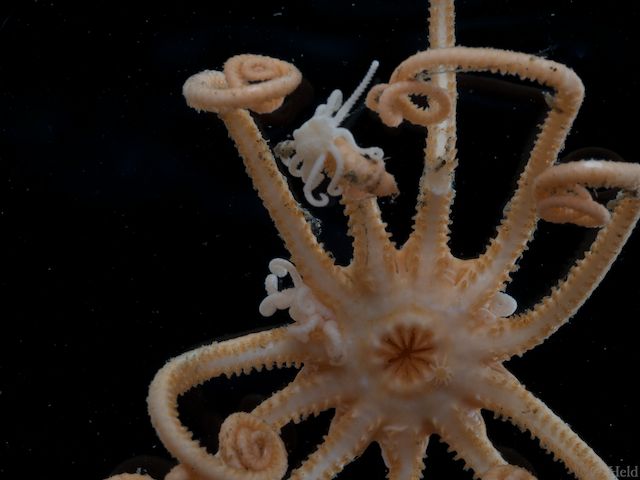
Stars, plural, for there are many offspring to be seen crawling on the central disc or the arms of the parent, with many more juveniles extending their white little arms from inside the pockets (bursae) at the base of their parent’s arms.
This is what makes science so exciting, each time you think you know something, you only need to look closer and you’ll learn something new - neat!
Contributed by: Christoph Held, Alfred Wegener Institute , Helmholtz Centre for Polar and Marine Research, Bremerhaven, Germany
PS – The bonus picture below is of a Snow Petrel flying over the ice.
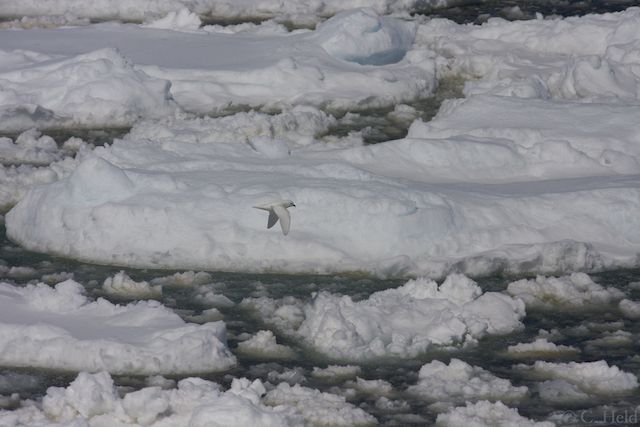
Last updated: 12/12/2013
